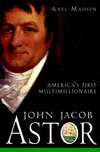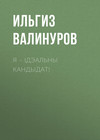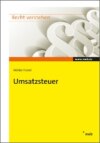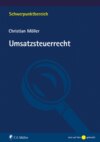Kitabı oku: «Burnett Rediscovered», sayfa 3
Rubia tinctorum (Rub-t)
Common Name Madder
N.O. Rubiaceae
Clinical Anaemia. Bones, affections of. Spleen, affections of.
Characteristics Ruber is Latin for red due to the red-coloured dye obtained from the roots of these plants. Animals that feed on madder have red-tinged bones. Pigs that are fed on madder have tissues, coloured red.
Symptoms Splenic anaemia after influenza.
Related remedies Coffea, China, Ferrum (in anaemia).
Dose Tincture. Burnett used 10 drop for splenic anaemia and anaemia due to less than optimum nutrition.
References Burnett, Clarke, Murphy, Stearn.
Scilla maritima (Scil). Also known as Squilla martima (Squill)
Common Name Sea Onion, Squill
N.O. Liliaceae/Hyacinthaceae
Clinical Angina pectoris. Bronchitis. Cough, catarrhal. Diuretic. Dyspnea. Pleurisy. Pneumonia. Spleen, affections of. Urine, excessive.
Characteristics Greek name Skilla for the sea squill. The English bluebell used to be named Scilla Nutans. Maritimus, -a, -um, meaning of the sea. Hahnemann’s proving resulted in many left-sided symptoms, particularly stitches under the free ribs on the left side. Hahnemann also pointed out that one of the best indications for Scilla was excessive flow of urine concomitant to other complaints. Rademacher used Scilla for spleen affections and stomach pains that are ameliorated by lying on the left side. Burnett built on Rademacher’s work and used Scilla for cases of enlarged spleen with the concomitant symptom of coughing. The cough causes flow of tears, sneezing, spurting of urine and even involuntary stools. A tide or flow of liquid from the body.
Symptoms Spleen pain, stitches under left free ribs. Spleen-cough may be accompanied with flow of tears, sneezing, urine and stool. Bronchitis, pleurisy, pneumonia, catarrhal cough. Bronchitis of the elderly. Child rubs face with fist during cough.
Black marks, spots on teeth. Nails become brittle and split.
Related remedies Ceanothus, Quercus.
Dose Tincture 15 to 30 drops five times a day. In cases where it caused diarrhoea, reduce dose to 5 drops three times a day.
References Burnett, Clarke, Stearn.
Urtica urens (Urt-u)
Common Name Stinging Nettle
N.O. Urticaceae
Clinical Agalactia. Allergic reactions. Bee-stings. Burns. Calculus, prevention of. Gout. Gravel. Hives. Kidney stones. Spleen, affections of. Urticaria, nodosa.
Characteristics Urtica is Latin for stinging nettle, Urens is stinging, burning. All species sting and even retain this property when the plant is dried. A great example is mentioned in A Gardener’s Dictionary of Plant Names. When the Linnaean herbarium was being photographed, specimen by specimen, in 1941 in case of destruction during World War two, the photographer, Miss Gladys Brown, was stung by dried Urtica, raising a blister. The specimen had been dried and mounted almost two hundred years earlier.
Burnett used this remedy for gout and spleen treatments frequently.
Symptoms Pain in left hypochondrium. Stinging, burning pains and urticaria rash. Hives and raised, red nettle rash. Urticaria from eating shellfish. Violent itching. Sunburn. Burns and scalds. Breasts have diminished secretion of milk after childbirth.
Burnett claimed that Urtica urens is a true simile to gout with the following symptoms: Fever, heat and cold, flushes. Passage of grit and gravel. Uneasiness of left rib region. Great restlessness.
Frequent use of Urtica urens earned him the nickname “Dr. Urtica”. The use of Urtica urens tincture often helps the body expel urates in the form of gravel in the urine. Burnett considered this gravel-expelling power great for both him in his clinical work and also for his patients’ benefit. He learnt of the use of this remedy after one of his patients, who was being treated for intermittent fever (also known as ague or malaria), came into his consulting room and declared herself quite cured of her fever. As Burnett looked at her notes to credit himself for the cure the patient informed him that it was not his remedy that cured the case but her charwoman who made her nettle tea to cure the fever.
“Homage to the charwoman of nettle fame!” (Gout and its Cure p.42.)
Related remedies Natrium muriaticum (Gout, fever, spleen), Quercus, Ceanothus, Ricinus communis (Diminished secretion of breast milk).
Dose Tincture 10 to 12 drops in a wineglass of warm water, morning and night.
References Boericke, Burnett, Clarke, Murphy, Stearn.
Uterus Remedies
Aurum-muriaticum-natronatum, Bellis perennis, Fraxinus americana, Helonias dioica, Thlaspi-bursa-pastoris
“I have long considered that being a mother is about the biggest thing on earth.” (Organ Diseases of Women p.12)
Aurum muriaticum natronatum (Aur-m-n)
Common Name Sodium Chloroaurate. Double Chloride of Gold and Sodium. Na Cl, Au Cl3 2H2O
Clinical Gastroenteritis. Carcinoma. Fibroids. Hair loss. Sycosis. Syphilis. Tongue, affections of. Tumours. Uterus, indurations of, Scirrhus of. Warts.
Characteristics Gold was once believed to be of botanic origin because it mainly occurs embedded in igneous rocks in a crystalline, wiry, branch-like pattern, which gives it the appearance of a plant growing in rock. This belief persisted until the 16th century when Agricola, a Swiss metallurgist, correctly refuted it.
Burnett considered Aurum muriaticum natronatum to have more power over uterine tumours than any other gold preparation.
When treating cases he would frequently change one indicated remedy for a similar acting remedy as a therapeutic strategy to move the case towards cure. (See Rotation of Remedies.) He would prescribe Aurum muriaticum natronatum 3x then follow it up with Aurum muriaticum 3x and then, sometimes, change to Aurum 3x. Aurum would be prescribed for a thickened state of the uterus (may have possibly been Endometriosis) accompanied by great depression of spirits. Aurum muriaticum would be indicated by infrequent menses and infertility. Cases of infertility that responded well to treatment with pregnancy being established were noted in his books with the triumphant case note “Enciente!”
Symptoms Uterus enlarged and displaced. Anteverted uterus, pointing towards rectum. Indurated cervix. Miscarriage from uterine indurations. Prolapse of uterus. Fibroids of uterus. Uterus tumours. Carcinoma of breast and uterus. Ulcers with induration of uterus.
• Nose, ulcers and caries.
• Hair falls out. Violent boring pains in head, mostly over one eye.
• Tongue white. Warts on tongue. Burning on tip of tongue.
• Constipation similar to Hydrastis, accompanied by catarrh.
Related remedies Conium, Lycopodium, Nitricum acidum, Phosphorus, Sulphur.
Dose 3x, five drops, morning and night.
References Boericke, Burnett, Clarke, Murphy, Stearn.
Bellis perennis (Bell-p)
Common Name Daisy
N.O. Compositae
Clinical Acne. Boils. Bruises. Fatigue. Injuries. Overwork. Pregnancy, complaints of. Psoriasis. Railway spine. Trauma. Tumours. Uterus, fatigued. Varicose veins. Venous stasis.
Characteristics Bellis from the Latin Bellus meaning pretty. Perennis meaning Perennial from the Latin Per through and Annus year. So Bellis perennis translates as “Pretty Perennial”. Bellis perennis along with fellow Compositae family members Arnica and Calendula is clinically useful for wounds, bruises, injuries and overwork and fatigue. Old names for Bellis perennis are Woundwort and Bruisewort which strongly indicate one of the main spheres of action of this remedy.
Symptoms General symptoms are a bruised, soreness sensation (Arnica). Aetiology of injuries or physical trauma, strain Arnica). Excellent for overwork in the garden (Arnica). The uterine symptoms are soreness, bruised sensation, as if squeezed. Uterine tumours. Injuries to pelvic organs. One of Burnett’s strong indications for this remedy is “difficulty walking during pregnancy”. Burnett considered this due to mechanical pressure, the tissues being pressed upon. Varicose veins of pregnancy.
A left-sided remedy with stitches in the spleen region, sore and enlarged. The remedy Cimicifuga, an excellent uterine organ remedy, also has a left-sided pain but this is located under the left breast, the classic sub-mammary pain. Burnett suggested that this indicates a certain relationship between uterus and upper part of the left side in women.
Produces acne, boils. Ill effects of drinking cold or iced drink when body is heated, affections due to cold wind and weather. Wakes early and cannot return to sleep.
Related remedies Arnica, Calendula, Hypericum, Hamamelis.
Dose Tincture and all potencies, particularly 1x and 1c. Clarke advises not to give dose near bedtime as it is apt to cause sleeplessness, waking at 3am and waking early morning.
References Boericke, Burnett, Clarke, Murphy, Stearn.
Fraxinus americana (Frax)
Common Name White Ash
N.O. Oleaceae
Clinical Uterus, affections of, prolapsed of. Uterus, tumours of.
Characteristics Fraxinus is the classical Latin name for ash. Burnett called it “the medicinal pessary” as he regarded it useful in all heavy states of the uterus with prolapsed and bearing down sensation and relaxed ligaments.
Symptoms Heavy womb, hypertrophy, hyperplasia. Enlarged uterus and backache. Fibroids, sub-involution and prolapse.
Related remedies Sepia, Lilium tigrinum, Natrium hypochloricum, Hydrastis.
Dose 5 drops increasing to 6 and then 10 drops given three times daily.
References Boericke, Burnett, Clarke, Murphy, Stearn.
Helonias dioica (Helon)
Common Name Unicorn root, False Unicorn, Devil’s Bit, Blazing Star
N.O. Melanthiaceae
Clinical Albuminuria. Amenorrhoea. Atony, uterus. Depression. Infertility. Kidney pains. Leucorrhoea. Libido, loss of. Menopause. Menorrhagia. Metrorrhagia. Miscarriage. Uterus, affections of.
Characteristics Helonias from Greek Helos, a marsh, which is the natural habitat of these plants. Helonias is closely allied, botanically and medicinally, with another uterine organ remedy Aletris farinosa which is also known as Unicorn root, star grass and blazing grass. Clarke describes Aletris farinosa as the most bitter of all plants. Disgust for food, nausea and particularly obstinate vomiting of pregnancy are all therapeutics of Aletris farinosa.
Symptoms The big keynote for this remedy is “a consciousness of the womb”. Kidney pain, ache and tender, especially during pregnancy. Helonias is symptomatically very close to the polycrest Sepia, both have a strong affinity for the uterus, with weakness and dragging down sensation in the pelvis. Both are therapeutics for uterine prolapse and both have a tendency to back ache, irritability, depression and low libido.
Helonias is better when busy and their mind is engaged upon a task.
Related remedies Aletris farinosa (closely allied botanically and medicinally with Helonias), Lilium tigrinum, Sepia.
Dose Tincture to low centesimal.
References Boericke, Burnett, Clarke, Murphy, Stearn.
Thlaspi bursa pastoris (Thlas)
Common Name Shepherd’s Purse
N.O. Cruciferaceae
Clinical Amenorrhoea. Cystitis. Fibroids. Haematuria. Haemorrhages. Leucorrhoea, stains. Metrorrhagia. Renal, calculi. Strangury. Urethritis. Uric acid, diathesis. Uterus, haemorrhages from; affections of; cancer of.
Characteristics Thlaspi is the Greek name for cress. Bursa is Latin for a purse; in allusion to the triangular shape seed pods. Pastoris relates to shepherds, hence the plant growing in pastures. The triangular shaped pods of Thlaspi bursa pastoris are similar in shape to the female uterus. This correspondence of plant morphology with human anatomy is an old herbal medicine idea called the Doctrine of Signatures. The idea being that certain plants have the appearance of the organ or part that they are medicinally suited to treat. Other examples being Euphrasia (Eyebright), Symphytum (Knitbone) and Sanguinaria (Bloodroot). This is an old and crude form of finding remedies but can be very valuable as a learning aide to students studying the vast materia medica. In his A Dictionary of Practical Materia Medica, Clarke quotes one of his favourite books Treasures of Botany, writing that “it has accompanied Europeans in all their migrations, and established itself wherever they have settled to till the soil”. Burnett observed that this plant grows well near dunghills, and that the odour of the tincture is similar to said locations. He describes it as “A very splendid uterine remedy”.
Symptoms Metrorrhagia, menses too frequent and too profuse resulting in exhaustion, flow lasting eight to fifteen days. Fibroids with excessive menstrual flow (Phosphorus, Ustilago). Every alternate period very profuse. Uterine haemorrhage concomitant with bladder infections. Leucorrhoea before and after menses, profuse and dark. Suppressed menses, menses delayed from lack of exercise.
Haematuria, frequent urging to pass urine, burns and strong odour. Dysuria of elderly; with dribbling. Chronic cystitis, renal stones, gravel, brick-dust sediment in urine.
Related remedies Trillium pendulum, Viburnum opulus, Ustilago maydis, Seneca (uterine haemorrhages), Thiosinaminum (fibroids).
Dose Tincture and low potencies. Burnett used the tincture (5, 6, or 7 drops twice to four times daily) for suppressed menses and low potencies for uterine haemorrhages. He observed that it may cause sexual excitement like Cantharis.
References Boericke, Burnett, Clarke, Murphy, Stearn.
1.5 Synorganopathy
Burnett refined the practice of using organ remedies to a level deeper than just the correspondence of remedy to organ. From observation and prescribing, he deduced that some presenting symptoms, while appearing to be from one organ, were in fact originating from a different organ. He termed this Synorganopathy. The diseased organ expressed itself vicariously through another organ.
Synorganopathy is when one organ becomes disturbed from its function but expresses symptoms through a secondary organ. The first organ is called the Primary Organ and the organ that expresses the symptoms is called the Secondary Organ. In all cases, the primary organ must be treated first to alleviate the symptoms in the secondary organ.
Primary Organ and Secondary Organ = Symptoms
This may seem confusing but a few examples will clear up any misunderstanding.
Varicose Veins
Keen observers will note that many people have varicose veins in just one leg. We can all have some ideas as to why, due to synorganopathy.
In Burnett’s book, Diseases of the Veins, he writes about mechanical cause or the obstructive element of varicose veins. Because we are bipeds and because of gravity, blood is pulled down to the lower extremities. Our arterial system is pumped (that’s what makes for the squirt pumping effect of injuries in martial arts films,) but our venous circulation has no such active pump. Relying more upon muscles to squeeze the blood back towards the heart with valves preventing back-flow. Burnett observed that mechanical causes predispose to varicose formation by encouraging back-flow.
Enlargement of organs may obstruct the circulation. A swollen liver can be a frequent cause of varicose veins of the right leg. An enlarged spleen can be the cause of varicose veins in the left leg. Ovaries that are enlarged may cause varicosities in either leg, as may slowness of the large intestine and also enlargement or polyps or fibroids of the uterus. All of the above organs (Liver, Ovaries, Uterus, Spleen and Intestine) can be considered as Primary Organs, whereas veins are the Secondary Organ. The symptoms call for treatment with vein medicines, but in order to cure the case, organ remedies are required for the mechanical cause. The primary organ must be treated to ameliorate the secondary organ and symptoms.
Heart Failure
Another example of synorganopathy is heart failure. Left ventricular failure may cause lung symptoms due to back pressure along the pulmonary veins resulting in pulmonary oedema, breathlessness and sometimes pink, frothy haemoptysis. A symptom picture that can look very much like Phosphorus.
Right ventricular failure can produce back pressure in the vena cava resulting in oedema of the legs, ascites, and an enlarged, engorged liver. A symptom picture that could indicate one of many liver remedies.
In his book, On Neuralgia: Its Causes and Remedies, Burnett remarks that angina pectoris may have its starting-point in obstructions. Hepatics, pancreatics, and splenics can be needed to help move the case forward. A master of therapeutics may be able to identify the similimum for the whole case and not need organ remedies, but Burnett found he could not do without them.
In the above two examples, the lungs and the liver are both secondary organs and the heart is the primary organ. Treatment of secondary organs, whether homoeopathic or allopathic in such cases can only ever be palliative. The primary organ must be prescribed for in order to cure the case.
The examples of varicose veins and heart failure make sense in relation to plumbing and fluids and pumps and gravity, but it must be stressed that this need not be the case. I once saw a very fastidious female patient who consulted for excessive menstrual flow, which was debilitating. Initially, I gave a good uterine organ remedy: Thlaspi bursa pastoris, and then Helonias in tincture and then Fraxinus americana 6x but no amelioration occurred, whatsoever. A history of left ovarian cysts and a vaginal cyst, recurrent infection of sexually transmitted disease, aversion to slimy foods and desire for orange juice all pointed to Medorrhinum. I gave 200c weekly with only an amelioration of waking at 3am, which I did not even know about! Arsenicum album and Calcium carbonicum followed based upon totality of symptom indications, but to no avail. Finally, I made the connection that the excessive flow occurred six months after she had caught an undiagnosed infection while travelling in Asia two years earlier. Her acute symptoms were: right-sided abdominal pain, slight jaundice and pale, almost white, floating stools. She made a recovery and thought about it no more. Students of anatomy, physiology and pathology would quite correctly deduce liver involvement. A prescription of Carduus marianus 2x twice daily for one month restored her cycle back to normal. Here, the primary organ was liver, which expressed symptoms via the secondary organ, the uterus. No obvious plumbing from liver to uterus to cause disruption, but treating the liver ameliorated the uterus symptoms. (This case could also be analysed from an aetiological perspective, but as it responded to organ treatment I thought it best to place it here.)
Synorganopathy is, currently, a little understood and even less so taught or discussed treatment modality. (All the more reason to bring it out into the open.) Granted, it’s a clinical rarity so does not deserve huge attention, but it certainly deserves further investigation.
1.6 Conclusion
The first part of this book has covered Organopathy, which may be defined as the treatment of Organ diseases with Organ remedies. Burnett considered organopathic treatment to be a simple application of the Law of Similars. Organ remedies are most often prescribed in the potency range Tincture (Ø) or as a low Decimal (1–3x) or Centesimal (1–5c). Repetition is normally once to four times daily for the duration of one to six months.
The terms Specificity of Seat (a remedy’s pathological affinity) and Primary Seat (pathological state in an organ) have been introduced. Burnett found that the quickest way to cure organ diseases was to match the specificity of seat/remedy pathological affinity with the primary seat/patient’s pathological state. In simpler terms this can be refined to:
Organ remedy pathological affinity reflects patient’s organ pathology.
Specificity of Seat matches Primary Seat.
Organ testing is the clinical strategy of prescribing an organ remedy that has pathological affinity to the case, and observing the response. The use of the totality of symptoms is down-graded to simple organ affinity and is an elementary use of the Law of Similars. If amelioration occurs then the test is positive and further treatment is required. No amelioration indicates a negative test and different avenues of treatment can now be considered.
Organ testing may lead to Rotation of Remedies, that is, the prescribing of similar-acting medicines, one after the other, to find the most effective treatment.
Certain organ remedies can have a Line of Action, which is the direction in which an organ is likely to enlarge. Also, remedies may have Synalgia, which is concomitant pain located in a different part of the body.
Burnett redefined and refined the term Similimum. This term is usually reserved for a prescription that covers a broad spectrum of characteristic symptoms from a patient’s case notes. He differentiated between the Symptomatic Similimum and the Pathological Similimum. The symptomatic similimum covers the totality of symptoms of the case but may or may not fully cover the pathological state. Whereas the pathological similimum fully covers the patient’s pathological state but may or may not cover the totality of symptoms. From an organopathic perspective – organ remedy for organ disease – Burnett introduced the term Simile. The simile is a simple use of the Law of Similars.
Synorganopathy is the rare clinical entity where a Primary Organ affects a Secondary Organ. The secondary organ then produces symptoms.
Ücretsiz ön izlemeyi tamamladınız.











